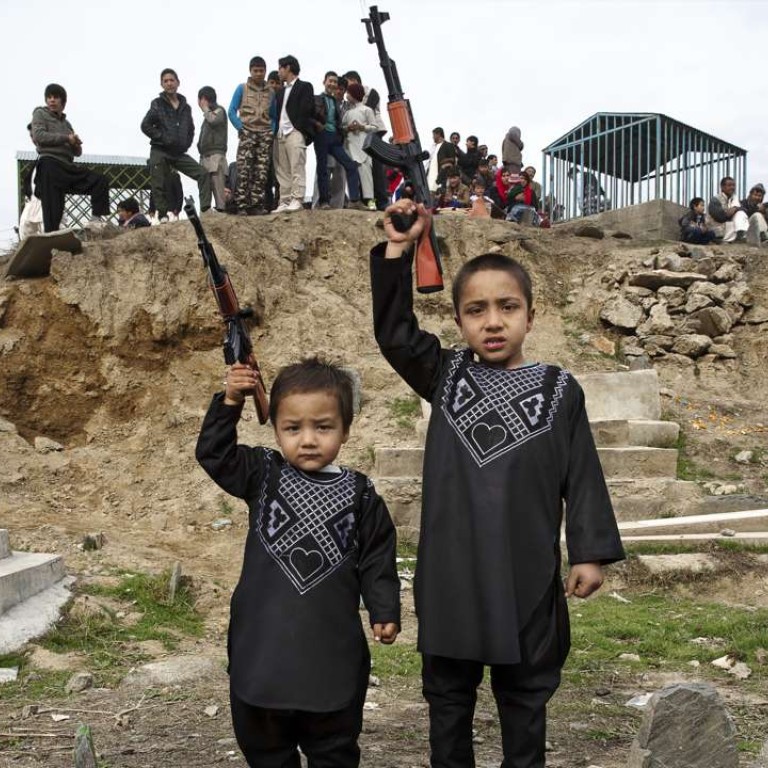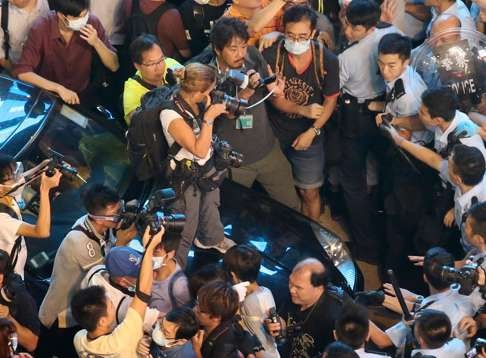
Photographer’s searing images of Afghanistan
Paula Bronstein has spent years depicting the lives and suffering of ordinary Afghans, with a focus on women who attempt suicide to escape forced and abusive marriages
A young Afghan woman, her burqa drawn back over her face, presses her fingers against her lips. Her hands are badly burned, the skin puckered and blistered. Beneath her pale blue cotton dress 70 per cent of her body is severely burned, but her face is unmarked and her eyes show the agony of her situation.
American freelance photographer Paula Bronstein met 18-year-old Masooma in Herat in eastern Afghanistan, close to the border with Iraq. It was October 2004 and she was working on a piece about self-immolation. Masooma had attempted suicide by setting herself on fire. She was one of many young women who sought release from their lives this way; a whole ward at the hospital in Herat is set aside for self-immolation victims.

At some point, there is a breaking point for these women, she says. They spend much of their time in the kitchen and cooking oil offers an easy and accessible way out.

That powerful image – beautifully shot, Masooma’s anguish raw – is the cover of Bronstein’s recently launched book, Afghanistan: Between Hope and Fear. It is the most powerful portrait of Afghanistan I’ve come across – these are images that you will never forget. It shows the damage and suffering of a country and its people in more than a decade of war.

Bronstein first went to Afghanistan soon after the September 11 attacks in 2001. She was documenting the US-led Operation Enduring Freedom for Getty Images. And she kept returning, through American’s longest ever war, driven by a desire to catalogue the lives of ordinary Afghan people.
“I was working for a news wire and looking at every kind of story. I did a huge variety, whether it was a news story or to do with the election or issues such as health care, girls’ education and sport. It was about mixing it up and delivering a story around the news that would be interesting to readers,” says Bronstein, who was a Getty staff photographer from 2002 to 2013 covering news stories in the Asia region.

But it’s her images of women that are the most powerful. Conservative Islamic beliefs, tribalism, the lack of education and poverty all add up to make it a very difficult place to be a woman, and Bronstein’s sensitivity to their plight made for deeply human portraits. As a female photojournalist she was able to gain the trust of these women. However, much of the time if access was granted a first time it was by men – brothers, husbands – who refused to let her return.

“It depends on security, but most of the time I can’t go back,” says Bronstein, who is based in Bangkok.
Writing in the foreword to the book, war correspondent Kim Barker describes being on assignment with Bronstein, covering the story of Afghans becoming hooked on heroin. They sat in a dark room with a mother and her two children as they smoked the drug.
“Bronstein is not some impassive journalist – after finding the family, she helped get them into rehab. Bronstein was continually adopting Afghans she met while on the job, always trying to help them in some small way,” writes Barker.

“The heroin addicts now are hanging out on the streets, under bridges. They are really rough and nasty and dangerous. They steal things from you. I had to hire police the last time I went under the bridge. I would never go there on my own,” Bronstein says.
Personal safety is a huge part of covering a country like Afghanistan. Bronstein knows that every time she enters she’s at risk, and she has friends who have been injured, some killed.
“I told Getty I wouldn’t be going on patrol unless I absolutely knew it was on a main road where there wasn’t any IEDs [improvised explosive devices]. People were getting blown up in the poppy fields and stuff,” Bronstein says.
Her friend photographer Giles Duley was nearly killed in 2013 in Afghanistan after stepping on a landmine. He survived and is a triple amputee, still working as a photographer. And Associated Press photographer Anja Niedringhaus was killed in an attack in which her colleague Kathy Gannon survived.
“Between the two of them they had decades of experiences and were with the police,” she says, but were in an extremely volatile border area. “It doesn’t matter what you do, part of it is just damn luck.”
Another dimension to photographing in a war-ravaged country is that everyone has their hand out, says Bronstein, a result of so many years of being helped by NGOs. Although she wouldn’t give money, she doesn’t believe the media should arrive empty handed, depending on who is being photographed. If it’s a poor family, she usually takes rice or cooking oil.
“In Afghanistan it’s expected. The mentality is – what’s in it for them? You’ve got to know who you are photographing, but absolutely never give money. The only time I have given money was out of respect at a funeral,” she says.
It was the funeral for a self-immolation victim. Bronstein had spoken to the 18-year-old woman in hospital. She had burns to more than 65 per cent of her body, but was sitting up in her hospital bed, talking. Bronstein left to have a meal, and when she returned the teenager had passed away. She learned then from the doctor that it is not uncommon for severe burns victims to have a last surge of energy before dying.
“In Afghanistan there is a lot of tragedy, you don’t become numb to it,” she says.

“Authorities, police, bureaucracy, threat levels, heart-wrenching stories – there’s lots of things to deal with. But you see pictures of weddings and body building and kids going to school and beautiful landscapes, so it’s not all depressing, is it?” she says.
And it’s true, the book does include lighter moments of life in Afghanistan – a woman in a white burqa feeding the pigeons at the Blue Mosque, a 70-year-old toothless man laughing, a young boy flying a kite. But the overriding image is of a people that have suffered immeasurably. There is a photograph of two boys holding toy guns at a New Year celebration. As Bronstein notes in the book’s afterword: “If conflict is all you ever experience, can happiness ever be defined without it”?
Afghanistan: Between Hope and Fear, published August 2016 by University of Texas Press. (Hardcover available from Amazon US$40)

